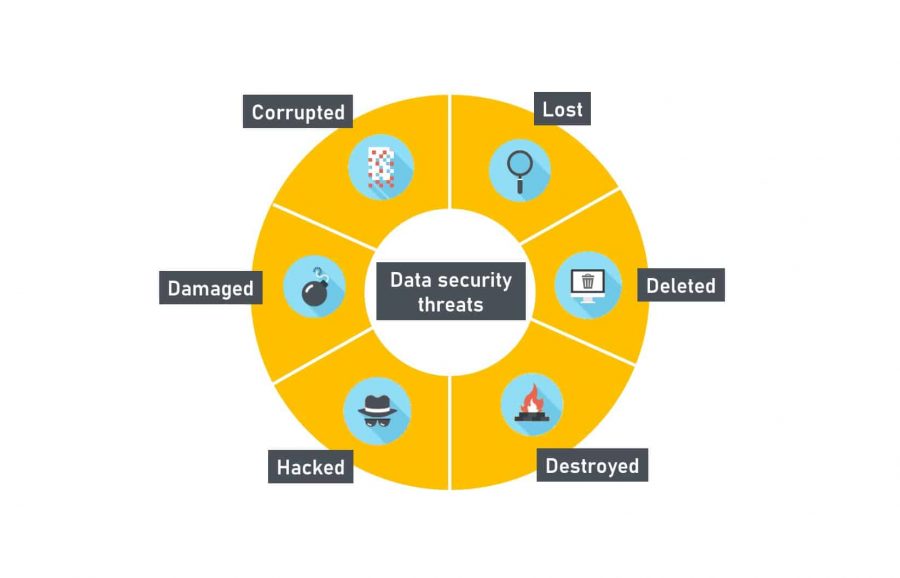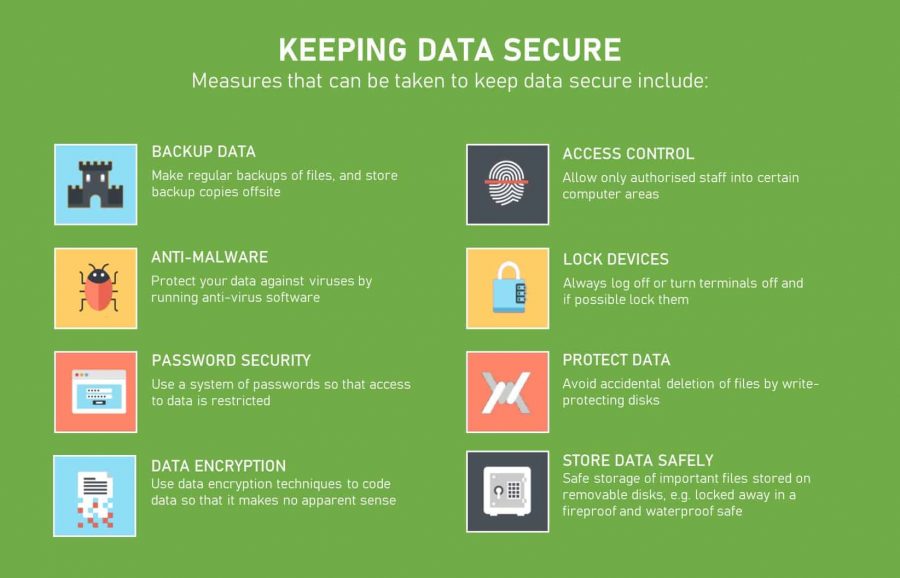5 Essential data security best practices for keeping your data safe

When companies collect a massive amount of data finding the right data security practices can be daunting. You need to protect the sensitive information of your company at each cost.
You can follow lots of data security steps, but here we will discuss the best practices for data security. We will discuss protection from internal threats, spreading awareness in employees, training of employees.
On this page:
What is data security?
Data security uses several techniques and technologies intending to protect data from accidental or intentional destruction, disclosure, or modification.
Data security is applied using administrative controls, physical security, logical controls, organizational standards, and other safeguarding mechanisms. Implemented either independently, or more typically in unison, these safeguarding methods will limit unauthorized or malicious access to data.
Why data security is important
The importance of protecting your data from external and internal threats is more crucial than ever before. Data security should form part of your cybersecurity strategy, contributing to organizations becoming more cyber resilient.
Organizations, regardless of size and industry, deal with data. From financial firms processing large quantities of personal and financial data to start-ups and SMBs storing contact details customers, data is used in both large and small businesses.
Data security aims to protect the data that an organization collects, stores, creates, processes receives or transmits. Compliance, with regulations and standards such as the HIPAA, PCI-DSS, and GDPR, are also major considerations for valuing data security.
Data must be protected regardless of the device, technology or method used to manage, process, store or collect it. Data breaches can lead to considerable fines and potential litigation. Any damage to an organization’s reputation may carry additional financial repercussions, in terms of lost sales and customers.

Ways of securing your data
There are several methods to protect your data from an increasing number of threats. While these may stem from external sources, insider threats are a possibility.
Consequently, organizations should also focus their data security efforts on ensuring that their data is safeguarded from internal threats, too. Methods for securing your data could involve:
- Data encryption: Data encryption scrambles every individual piece of data. Access will not be granted to encrypted data without an authorized key being provided.
- Data masking: Masking specific areas of data can protect it from disclosure to external malicious sources, and also internal personnel who could potentially use the data. For example, passwords may be masked in a database, or on a website login page.
- Data resilience: By creating backup copies of data, organizations can recover data should it be erased or corrupted accidentally or stolen during a data breach.
Key threats to your data
Implementing data security to keep your data secure is imperative for all organizations. If your business suffers stolen, damaged or lost data, it can be disastrous for your business.
Failing to implement robust data security, can lead to your data may become:
- Damaged or lost during a system crash
- Corrupted due to faulty hardware and power failures
- Lost by accidentally deleting or overwriting files
- Corrupted, lost or stolen by computer viruses, and malware
- Altered or deleted by unauthorized users
- Destroyed by natural disasters, acts of terrorism, or war
- Altered, deleted or stolen by staff to make money or take revenge on their employer

5 Essential best practices for data security
These best practices can help protect your sensitive information.
Be prepared for internal threats
When we think about data breaches and cyber attacks, we only think about external threats and hackers. Companies need to pay attention to these cyber-attacks, but they don’t forget to pay attention to internal threats. Internal threat is an employee of a company with access to the company’s servers and sensitive data.
We don’t take it seriously, but it has been observed that internal threats result in more security breaches. Internal attacks are often unintentional, but sometimes these attacks can be deliberate as well.
Most risks of internal threats are hidden within the company’s structure. For example, companies allow access to too many devices containing sensitive information, excessive privileges given to users, and complex information technology.
These internal threats can be significantly reduced by setting a clear company policy about who can access sensitive data and improved employee security training.
Create and implement employee security training
There should be a set of proper security guidelines. Moreover, a company needs to educate the employees about managing confidential data and responding to any suspicious activity.
Several best practices for data security can be followed to prevent internal and external attacks. Employees must be trained about how to lock the sensitive information when they’re away from the computers. Moreover, they should be taught to avoid clicking links and emails that don’t come from trusted links.
Use strong passwords and keep your devices close when you’re out of the office. Employees must be provided with these basic training to protect your firm from internal and external threats. When you have proper employee security training standards in place, you can rest assured that you’re safe.

Set an information security policy to protect your data
Data can be structured and unstructured and exists in databases, cloud, mainframes, files, etc. Due to this massive data, bits of data can be forgotten or misplaced. When you want to keep your company secure from data breaches, you need to protect both the biggest and smallest databases and files. It will ensure that you’re protecting every bit of the company’s data.
For implementing a unified data policy, ensure that you have a single Cybersecurity strategy in place for all the data regardless of the location. It will ensure that you don’t have to look for data separately and don’t leave any data unattended. Moreover, if you receive any threats or alerts, you can respond to them quickly.
Encrypt all your data
Data breaches mostly occur when data is easily readable by the hackers. On the other hand, when you have encrypted data, hackers can’t read it despite having access to your data. Encrypting data is a crucial step in protecting your sensitive information.
The company must ensure that they’re not only protecting the data at the office; employees must encrypt data while working from home. Teach your employees about safe ways, such as a VPN.
Comply with security regulations
When your organization is compliant with security and privacy regulations, it is beneficial to win customers’ trust, and it can help your company as well. For example, GDPR forces companies to pay more attention to data security than ever before.
Moreover, a dedicated team should be assigned to ensure security regulations. When organizations continuously monitor and improve the security standards, it can help them protect the sensitive and confidential data of the company.

Keeping your data secure
Data breaches and cyber-attacks are common nowadays, so organizations need to pay proper attention to Cybersecurity strategy as they do with developing a marketing strategy. For this, they need to pay attention to internal threats along with external threats.
Moreover, they should follow the best practices for data security, such as setting a unified data solution, compliance with security regulations, data encryption, employee training and awareness, and protecting every bit of data. These practices can ensure that your sensitive data is secure.
It will help companies to win the trust of customers, and they can generate more revenue. On the other hand, when a data breach occurs in a company, it negatively impacts the customer’s mind. Implement these practices and stay safe.

